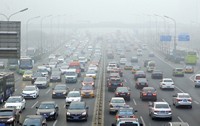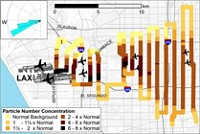Advertisement
Grab your lab coat. Let's get started
Welcome!
Welcome!
Create an account below to get 6 C&EN articles per month, receive newsletters and more - all free.
It seems this is your first time logging in online. Please enter the following information to continue.
As an ACS member you automatically get access to this site. All we need is few more details to create your reading experience.
Not you? Sign in with a different account.
Not you? Sign in with a different account.
ERROR 1
ERROR 1
ERROR 2
ERROR 2
ERROR 2
ERROR 2
ERROR 2
Password and Confirm password must match.
If you have an ACS member number, please enter it here so we can link this account to your membership. (optional)
ERROR 2
ACS values your privacy. By submitting your information, you are gaining access to C&EN and subscribing to our weekly newsletter. We use the information you provide to make your reading experience better, and we will never sell your data to third party members.
Environment
Vehicles Responsible For More Particulate Pollution Than What Comes Out Of Their Tailpipes
Air Pollution: Atmospheric reactions of volatile exhaust compounds account for significantly more fine particles than those released directly from cars and trucks
by Laura Cassiday
September 15, 2014

Vehicles spew out a range of particulate matter such as black carbon and organic aerosols. State and federal governments have enacted regulations to reduce the emission of these fine particles, in part because environmental scientists have linked them to heart and lung disease. But car and truck tailpipes also emit volatile organic compounds (VOCs) that eventually get converted into particulate matter through chemical reactions in the atmosphere. Now researchers have measured the amount of particulate matter resulting from these VOCs and estimate that it is 10 times as great as what the vehicles release directly (Environ. Sci. Technol. 2014, DOI: 10.1021/es502239v).
The findings confirm what scientists have suspected for years on the basis of studies of urban air, says Joost de Gouw, a physicist at the National Oceanic & Atmospheric Administration, in Boulder, Colo., who was not involved with the study. “Now we have the data to prove it.”
Environmental scientists have been trying to better understand the contribution vehicles make to overall particle pollution, says Allen L. Robinson, a mechanical engineer at Carnegie Mellon University and lead researcher of the new study. One tricky part of estimating their contribution is the amount of so-called secondary organic aerosols created by vehicle exhaust. These particles form when VOCs such as benzene or toluene waft out of vehicle exhausts and get oxidized in the atmosphere. Researchers don’t fully understand the relative contributions of this secondary particulate matter and the particles directly released from tailpipes.
So Robinson and his colleagues decided to measure the amount of secondary organic aerosols that arose from actual vehicle emissions. During a two-week period in May 2013, they collected air from the Fort Pitt Tunnel in Pittsburgh, through which about 61,450 vehicles travel every day. The team inserted a tube through a ventilation slit in the tunnel and directed air into a device called a potential aerosol mass flow reactor, where hydroxyl radicals oxidized VOCs to form secondary organic aerosols. The researchers measured the amounts of primary and secondary organic aerosols that came from the tunnel air using mass spectrometry.
The team varied the concentration of hydroxyl radicals in the reactor to simulate different exposure times the volatile compounds could experience in the atmosphere. They found that the production of secondary organic aerosols peaked at a hydroxyl radical concentration corresponding to 2.7 days in the atmosphere. This result suggests that previous experiments using smog chambers may have underestimated the amount of secondary organic aerosols produced: In most of those experiments, hydroxyl concentrations corresponded to less than one day. Overall, the mass of secondary particulate matter produced from tunnel air was about 10 times that of primary particulate matter emissions.
NOAA’s de Gouw notes that because the researchers sampled emissions from a highway tunnel, they were able to average emissions from many different vehicles. In contrast, previous studies in smog chambers examined only one vehicle at a time, which is less representative of the fleet of cars on the road today.
Robinson says the results are important because most current particulate matter regulations target just primary emissions. However, he says that preliminary research by his group suggests that increasing the number of partial zero-emissions vehicles could help. These vehicles are effective at reducing both primary and secondary organic aerosols.





Join the conversation
Contact the reporter
Submit a Letter to the Editor for publication
Engage with us on Twitter